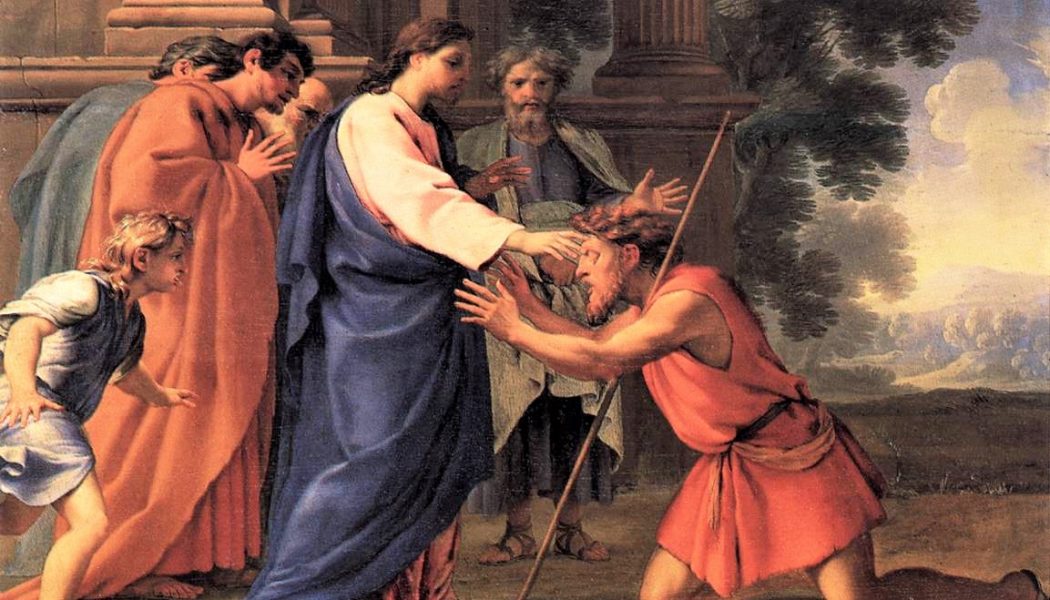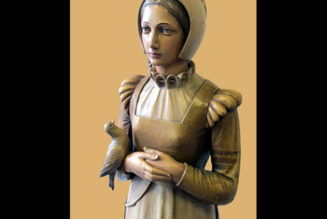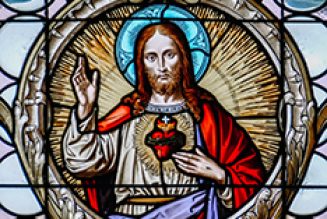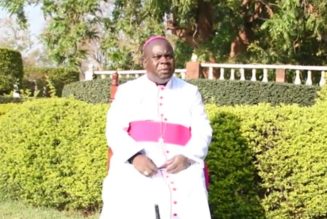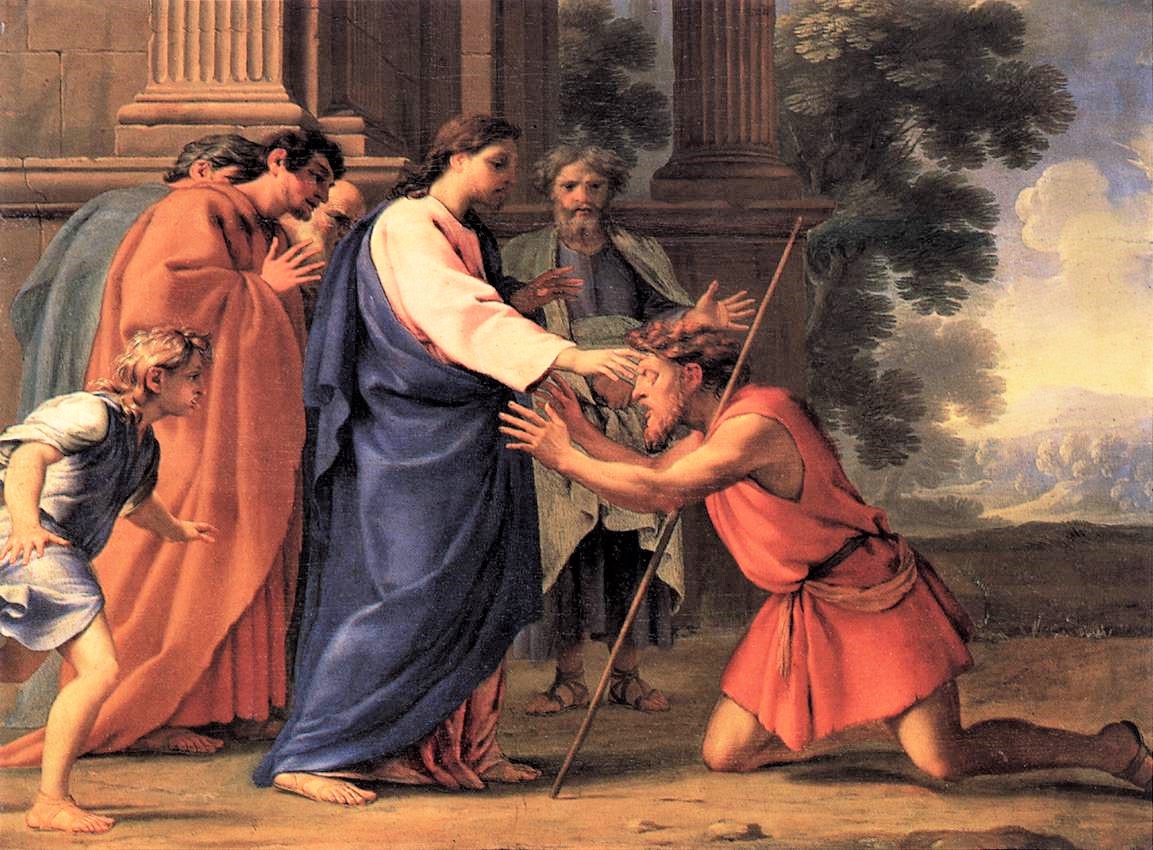
In today’s Gospel, Jesus, the Light of the World, brings light to a man born blind. If you are prepared to accept it, you are the man born blind, for all of us were born blind and in darkness. It was our baptism and the faith it gave that rendered us able to see and to come gradually more fully into the light. The man in today’s Gospel shows forth the stages of the Christian walk, out of darkness and into the beautiful light of Christ. Let’s take a moment to ponder the stages of the blind man’s walk, for each of us is the man.
I. The Problem that is Presented – We are introduced to a man who was blind from birth, incapable of seeing at all. As Jesus passed by he saw a man blind from birth. His disciples asked him, “Rabbi, who sinned, this man or his parents, that he was born blind?” Jesus answered, “Neither he nor his parents sinned; it is so that the works of God might be made visible through him. We have to do the works of the one who sent me while it is day. Night is coming when no one can work. While I am in the world, I am the light of the world.”
So there is the problem: he is blind; he has no vision. On account of Original Sin, we lost all spiritual vision. We could not see God or endure the light of His glory. This lack of vision causes many to have no “vision” for their life. They don’t know why they were made or what the true purpose of their existence is. Many cannot see past the sufferings of this world to the glory that awaits. Others have retreated into the material world and cannot see beyond it. Still others have retreated even further, away from reality into the realm of their own mind, their own opinions. St. Augustine describes this condition of the human person as curvatus in se (man turned in on himself). Yes, there is a blindness that imprisons many in the darkness. Even for us who believe there are still areas where it is hard for us to see. Coming to see God more fully, and to see ourselves as we really are, is a journey; one we are still on.
While the disciples want to dwell on secondary causes, Jesus sidesteps these and focuses on solutions. Assessing blame is unproductive; healing the man is uppermost. In a statement dripping with irony, Jesus says that the works of God will be made visible in a blind man. For the foolishness of God is wiser than man’s wisdom, and the weakness of God is stronger than man’s strength (1 Cor 1:25). Yes, God can make a way out of no way and write straight with crooked lines.
II. The Purification that is Prescribed – Having diagnosed the problem, Jesus begins the work of healing this man. When he had said this, he spat on the ground and made clay with the saliva, and smeared the clay on his eyes, and said to him, “Go wash in the Pool of Siloam”—which means Sent. So he went and washed, and came back able to see.
Hopefully, you can see baptism here. Jesus tells him, “Go wash … he went and washed, and came back able to see.” The Catechism of the Catholic Church says this of the Sacrament of Baptism:
This bath is called enlightenment, because those who receive this [catechetical] instruction are enlightened in their understanding … Having received in Baptism the Word, “the true light that enlightens every man,” the person baptized has been “enlightened,” he becomes a “son of light,” indeed, he becomes “light” himself (CCC 1216).
Baptism is required in order to truly see. It is no accident that John mentions the name of the pool to which the man goes: Siloam, a name meaning “sent.” Jesus sends him and He sends us. Baptism is required. Jesus says elsewhere, Truly, truly, I say to you, unless one is born of water and the Spirit, he cannot enter the kingdom of God (John 3:5).
Notice that the man comes back able to see. But just because you’re able to see doesn’t mean you actually do see. Right now I am able to see the Statue of Liberty; my eyes function properly, but I do not see it; I have to make a journey in order to do that. Similarly, the man here is able to see Jesus, but he does not yet see Him. He has a journey to make in order to do that. He has a long way to go to see Jesus fully, face to face. Baptism is not the end of our journey but the beginning of it. It renders us able to see, but we are still newborn babes. We need to grow. We can see, but there is plenty we haven’t yet seen.
III. The Perception that is Partial – The man can see but still does not know much of the one who has enabled him to see. His neighbors and those who had seen him earlier as a beggar said, “Isn’t this the one who used to sit and beg?” Some said, “It is,” but others said, “No, he just looks like him.” He said, “I am.” So they said to him, “How were your eyes opened?” He replied, “The man called Jesus made clay and anointed my eyes and told me, ‘Go to Siloam and wash.’ So I went there and washed and was able to see.” And they said to him, “Where is he?” He said, “I don’t know.”
So he’s able to see. But he hasn’t yet seen much. The man must grow in faith to come to know who Jesus really is. Look at how his partial perception is described. For now, he merely understands Jesus as “the man called Jesus.” To him, Jesus is just “some guy.” When asked where Jesus is, all he can say is that he doesn’t know. Although he is able to see, he does not yet actually see Jesus.
This describes a lot of Christians. They know about Jesus but they don’t know Him. Many Catholics in the pews are “sacramentalized but unevangelized.” That is, they have received the sacraments but have never really met Jesus Christ; they do not know Him in any more than an intellectual way. Many don’t even expect to know Him. He is little better to them than “the man called Jesus.” They’ve heard of Jesus and even know some basic facts about Him, but He is a distant figure in their lives. When asked questions about Him, they respond like this man: “I don’t know.”
IV. Progress through Persecution and Pondering – The text goes on to show us the progress that this formerly blind man makes in coming to know and finally see Jesus. It is interesting that this progress comes largely through persecution. Persecution need not always be understood as something as severe as being arrested and thrown in jail. It can come in many forms: puzzlement expressed by relatives and friends, ridicule of Catholicism in the media, or even those internal voices that make us question our faith. In whatever form, though, persecution has a way of making us face the questions and refine our understanding. Our vision gets clearer as we meet the challenges.
Notice the man’s progress thus far. He has been baptized and is now able to see, but he still knows little of Jesus, referring to Him only as “the man called Jesus,” He doesn’t know where Jesus is. He is about to grow, though, and does so in several stages.
In stage one of the man’s post-baptismal growth his neighbors turn on him and bring him to the Pharisees, who interrogate him because Jesus had healed him on the Sabbath.
They brought the one who was once blind to the Pharisees. Now Jesus had made clay and opened his eyes on a Sabbath. So then, the Pharisees also asked him how he was able to see. He said to them, “He put clay on my eyes, and I washed, and now I can see.” So some of the Pharisees said, “This man is not from God, because he does not keep the Sabbath.” But others said, “How can a sinful man do such signs?” And there was a division among them. So they said to the blind man again, “What do you have to say about him, since he opened your eyes?” He said, “He is a prophet.”
Notice what this persecution does for him. As he is challenged to say something about Jesus, he moves beyond calling him “the man called Jesus” and describes Him as a prophet. The man has gained some insight. A prophet speaks for God and Jesus is the Word made flesh.
In stage two of the man’s post-baptismal growth the Pharisees doubt his story and broaden their persecution, interrogating and threatening his fearful parents.
Now the Jews did not believe that he had been blind and gained his sight until they summoned the parents of the one who had gained his sight. They asked them, “Is this your son, who you say was born blind? How does he now see?” his parents answered and said, “We know that this is our son and that he was born blind. We do not know how he sees now, nor do we know who opened his eyes. Ask him, he is of age; he can speak for himself.” His parents said this because they were afraid of the Jews, for the Jews had already agreed that if anyone acknowledged him as the Christ, he would be expelled from the synagogue. For this reason, his parents said, “He is of age; question him.”
In stage three of his post-baptismal growth we note that the continuing persecution seems to make him grow even stronger and more able to withstand his opponents. Note his determination and fearlessness during the second interrogation he faces, which includes ridiculing him and placing him under oath:
So a second time they called the man who had been blind and said to him, “Give God the praise! We know that this man is a sinner.” He replied, “If he is a sinner, I do not know. One thing I do know is that I was blind and now I see.” So they said to him, “What did he do to you? How did he open your eyes?” He answered them, “I told you already and you did not listen. Why do you want to hear it again? Do you want to become his disciples, too?” They ridiculed him and said, “You are that man’s disciple; we are disciples of Moses! We know that God spoke to Moses, but we do not know where this one is from.” The man answered and said to them, “This is what is so amazing, that you do not know where he is from, yet he opened my eyes. We know that God does not listen to sinners, but if one is devout and does his will, he listens to him. It is unheard of that anyone ever opened the eyes of a person born blind. If this man were not from God, he would not be able to do anything.” They answered and said to him, “You were born totally in sin, and are you trying to teach us?” Then they threw him out.
The result of this is to further deepen his vision of Jesus. At first, he saw Jesus only as “the man called Jesus.” Then he sees Him as a prophet. Now he goes further and sees Him as “from God.” He’s progressing from sight to insight. His ability to see, given to him in baptism, is now resulting in even clearer vision.
V. Perfection that is Portrayed – The man has been thrown out of the synagogue, as many early Christians were. He has endured the hatred of the world and the loss of many things. When Jesus heard that they had thrown him out, he found him and said, “Do you believe in the Son of Man?” He answered and said, “Who is he, sir, that I may believe in him?” Jesus said to him, “You have seen him, the one speaking with you is he.” He said, “I do believe, Lord,” and he worshiped him.
Now the man’s vision is clear. After all this, he finally sees. Not only does he see Jesus, he sees who Jesus is. First he saw Him only as “the man called Jesus.” Then he sees Him as a prophet. Next, he says that He is from God. The final stage is the best of all. He actually sees Jesus and falls down to worship Him. Jesus is not only from God, he is God. Christ has fully enlightened him.
This is our journey, moving in stages to know Jesus more perfectly. One day we will see Him face to face; we will see Him for who He is.
Where are you on this journey? If we are faithful, our vision is getting better daily, but it is not yet complete. Scripture says,
- For now we see in a mirror dimly, but then face to face. Now I know in part; then I shall understand fully, even as I have been fully understood (1 Cor 13:12).
- Beloved, we are God’s children now; it does not yet appear what we shall be, but we know that when he appears we shall be like him, for we shall see him as he is (1 John 3:2).
- My soul is thirsting for God, the God of my life; when can I enter and see the face of God? (Psalm 42:2)
For now, make this journey. Make it in stages. Come to know who Jesus is.
I have it on the best of authority that the man, on his journey to Jesus, sang this song:
Walk in the Light, beautiful light. Come where the dew-drops of mercy shine bright. Walk all around us by day and by night, O Jesus the Light of the World!
Let there be light!
[embedded content]
